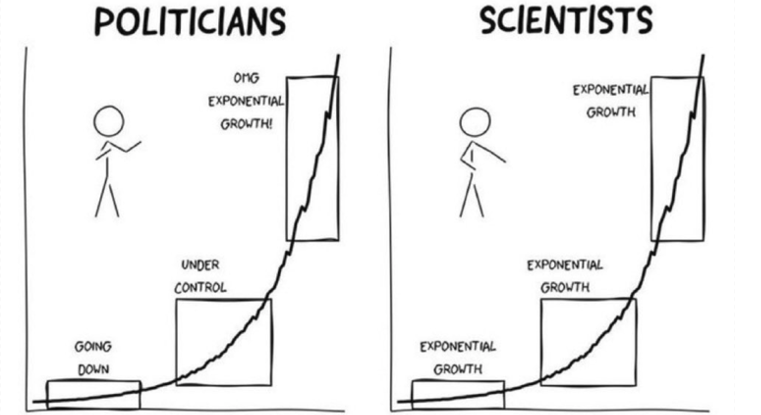For many decades I have been amazed that our health care system primarily focuses on treatment and not prevention. I had assumed it was because the United States has a profit-driven system, but the COVID-19 pandemic has revealed additional important factors. Public health’s primary focus has always been on prevention, but when public health is successful, often nothing happens, and the impact public health workers have had on our communities goes unnoticed.
Unfortunately, infection preventionists (IPs) fall firmly into this category. Preventing infections hides an infection’s true threat and firmly places IPs into the category of unsung heroes. The inability of some leaders to focus on preventing infections has placed our nation in peril, resulting in an ineffective COVID-19 response, fueled an exponential growth in monkeypox infections, along with a rise in antibiotic-resistant bacteria, and has allowed all but conquered diseases, such as polio, to start to reemerge.

Credit: Eric Feigl-Ding, ScD, Twitter, July 23, 2022

When the principles of public health are not vigorously applied (and in some cases all but abandoned) our communities suffer. Individual freedom will not stop a pandemic or contain a disease, only community-wide actions can do this, and the political willingness to act and embrace public health strategies has languished. A recent tweet by Eric Feigl-Ding, ScD, portrays this recalcitrance with the prevention of spread. Scientists early on warned of exponential growth, while politicians declared the epidemic gone, then under control. Only when the barn has burned down did elected officials become concerned about the once avoidable epidemic.
Take, for example, monkeypox, a DNA virus which has limited ability to spread compared with SARS-CoV-2. The monkeypox pandemic emerged with a few cases. Despite warnings, too little was implemented too late. We should have been able to contain this outbreak, with effective case tracking, ring vaccination, and public education.
“There are both vaccines and antiviral medications which are effective against orthopoxviruses. In addition, epidemiological case tracking and public education are expected to bring this (monkeypox) outbreak under control.”
Instead, the United States made similar mistakes to what we witnessed at the beginning of the SARS-CoV-2 pandemic, providing too little too late, which allowed monkeypox to exponentially grow into an epidemic.
Monkeypox currently appears to be primarily spread by male sex with men (MSM). Unfortunately, there are beginning signs that monkeypox is spilling over into the general population. It is estimated that monkeypox has an R0 of approximately 2.1 (1 infected person spreads it to approximately 2 others), which is much less infectious than our current strain of SARS-CoV-2, but more infectious than the seasonal flu which has an average R0 of 1.3. In addition, this strain of monkeypox may be mutating 12 times faster than once thought.
Last week, the Centers for Disease Control and Prevention reported that 2 children in the United States have contracted monkeypox, and there is mounting evidence that monkeypox can, under at least certain circumstances, aerosolize, which may augment its spread in the general population. A recent report from the United Kingdom’s NHS England Airborne HCID Network found significant surface contamination and the “potential” for aerosolization of the monkeypox virus “during certain activities,” stating:
“We identified widespread surface contamination (66 positive out of 73 samples) in occupied patient rooms (MPXV DNA Ct values 24·7-38·6), on health care worker personal protective equipment after use, and in doffing areas (Ct 26·3-34·3). Five out of 15 air samples taken were positive. Significantly, 3 of 4 air samples collected during a bed linen change in 1 patient’s room were positive (Ct 32·7-35·8).”
At this point some leaders feel it is too late to successfully contain monkeypox, a situation that may well become much worse if the disease finds a sustainable host by entering our rodent population. As of July 22, 2022, there were 16,836 confirmed cases of monkeypox worldwide and 2890 cases in the United States.
The World Health Organization’s leadership has just declared monkeypox a global emergency, overruling an indecisive WHO advisory panel. Only 2 other diseases have had this level of alert, polio and SARS-CoV-2. The United States’ Department of Health and Human Services is also considering declaring monkeypox a public health emergency.
Unfortunately, I fear large portions of our public are not convinced. For example, Dr. Denise Dewald tweeted that monkeypox “will become established in the pediatric and general population and will transmit through daycares and schools” similar to MRSA. She was promptly criticized as “promoting hysteria” by a prominent journalist. I would not call such a statement hysteria but a genuine concern which needs to be monitored closely.
Despite public reluctance, infection preventionists must maintain a clear and public voice that promotes the principles of preventing the spread of disease. Monkeypox is fast becoming entrenched in our communities. Along with the newly reported case of polio in an unvaccinated individual in New York City, a disease quiescent in the United States since 2005, necessitates that now more than ever the voice of infection preventionists needs to be heard.